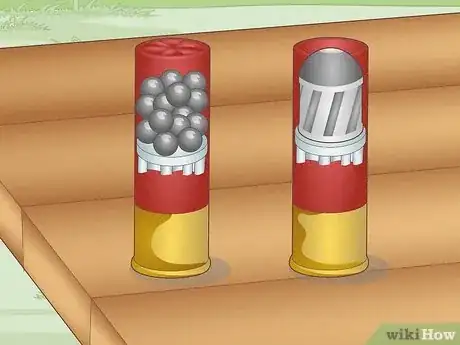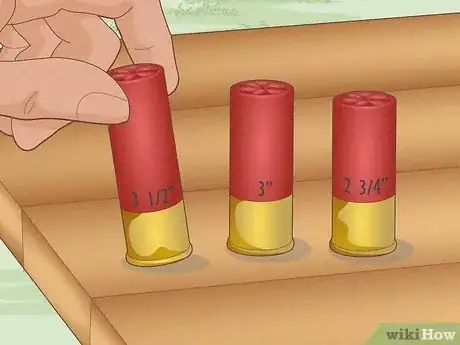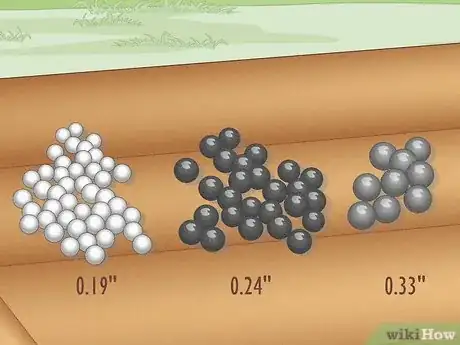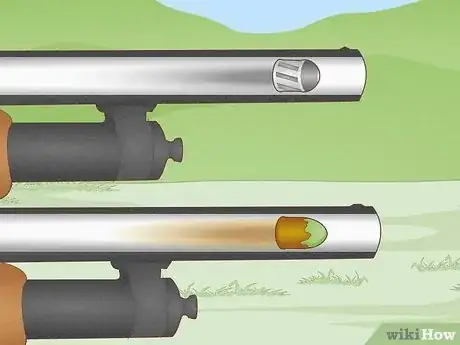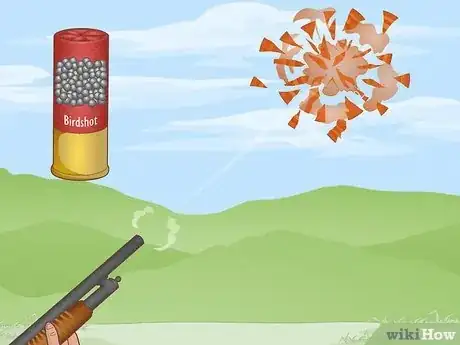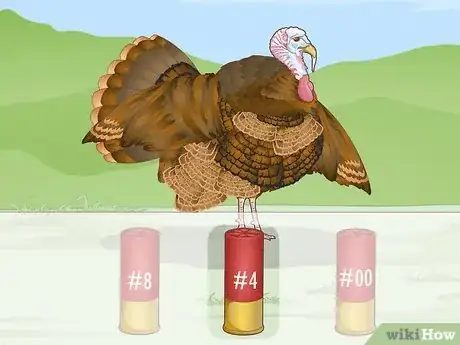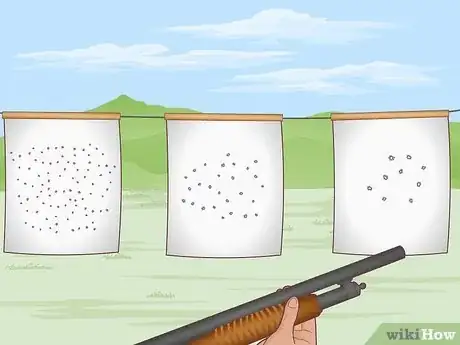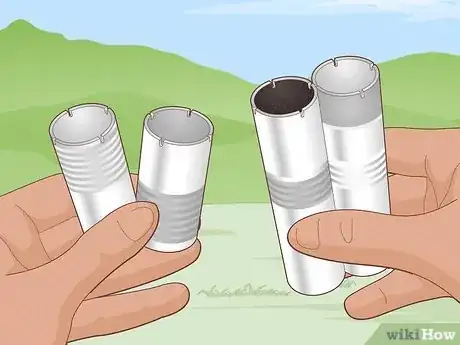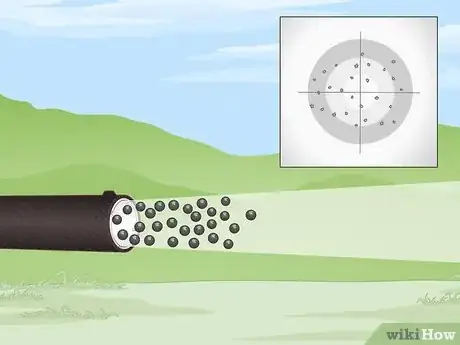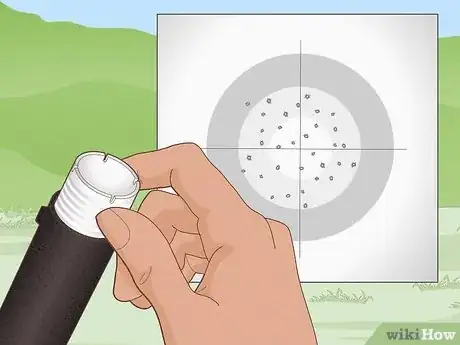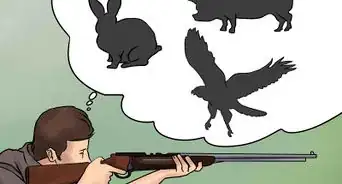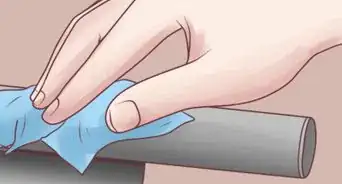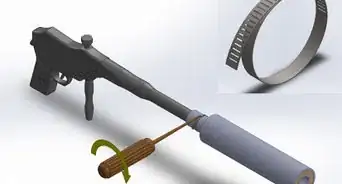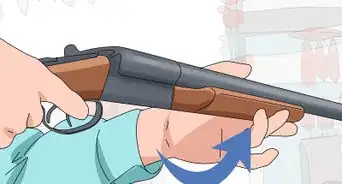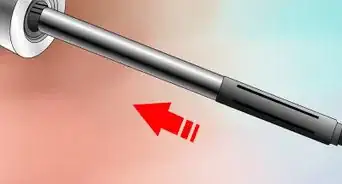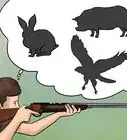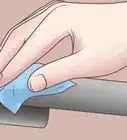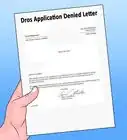wikiHow is a “wiki,” similar to Wikipedia, which means that many of our articles are co-written by multiple authors. To create this article, 20 people, some anonymous, worked to edit and improve it over time.
There are 8 references cited in this article, which can be found at the bottom of the page.
wikiHow marks an article as reader-approved once it receives enough positive feedback. In this case, several readers have written to tell us that this article was helpful to them, earning it our reader-approved status.
This article has been viewed 602,866 times.
Learn more...
Because of the variety of ammunition available for the shotgun, it is one of the most versatile tools for use in hunting and sport. By learning the varieties, styles, and conventions of ammunition available, you can select the right shot for the job at hand. Read on for a primer on shotgun shells, slugs, and chokes.
Steps
Learning the Basics
-
1Distinguish between the two basic styles of shotgun shell. From a shotgun, you can either fire "shot" or "slugs." Shot shells are plastic cartridges filled with tiny metal pellets and should always be fired from non-rifled shotgun barrels. Slugs are essentially a single, fairly large metal bullet loaded in a plastic cartridge.[1]
- The kind of shot used in shot shells also varies and it is important to understand the way shot is sized. Birdshot contains smaller pellets for use on smaller animals or targets, while buckshot rounds are filled with larger pellets for use on larger animals or targets.
- Slugs are available in rifled varieties, for use in smooth-bore barrels, and "sabot" varieties, for use in rifled barrels.
-
2Buy shells that match the gauge size of your shotgun. Shotguns come in many different gauges, and the ammunition will correspond to that gauge. You must use 12 gauge ammunition for a 12 gauge shotgun, 20 gauge for a 20 gauge, etc.[2]
- A 20 gauge shell will fit in a 12 gauge gun, slide about halfway down the barrel and stick if you try to fire it. This can be very dangerous, so it's critical to make sure you buy the appropriate size of shell, regardless of style.
Advertisement -
3Determine the length of the shells you're considering. Longer shells contain more powder and more shot per shell, or a larger slug. The standard shotgun chamber size is 2 3/4 inches for all gauge shotguns. Some shotguns have a 3 inch chamber. Shotguns are known to favor different loads and different shot, so experimenting with various combinations in search of a good match can be useful.[3] 12 gauge shot shells are the most common shotgun shells sold, and are typically available in three different shell lengths:
- Regular shells are 2 3/4" long - safely fired in a shotgun with a 2 3/4" or 3" chamber
- Magnum shells are 3" - safely fired in a shotgun with a 3" chamber
- Super-magnum shells are 3 1/2"
- Make sure that the chamber of your shotgun is as long or longer than the shells you choose. Do not use 3" or 3 1/2" shells in a 2 3/4" chamber or 3 1/2" shells in a 3" chamber.
-
4Learn the shot number. The shot number will be printed on boxes of ammunition and refers to the size of the individual pellets in the shell. Larger shot numbers mean smaller pellets.[4]
- The diameter of birdshot is equal to .17" minus the shot number. So, #4 shot is .13" in diameter. While it isn't necessarily important to know the exact size of the pellets, it's important to understand whether you're getting larger or smaller shot if you're planning on hunting.
- Buckshot is somewhat more complicated. Available in increments of zeroes, buckshot is usually referred to as "ought." 000 is called "triple-ought," and this buckshot is .36" in diameter, while double-ought is .33". To complicate matters, buckshot is also available in #4 sizing, which is .24" in diameter.
-
5Learn the slug sizing. Slug power is determined in the same way as buckshot, with standard, magnum, and super-magnum loadings. With magnum and super-magnum are often loaded with heavier slugs.
- The "rifled" slug, used in smooth-bore shotguns, has rifling or ribs on the slug. These ribs are designed to prevent damage to the gun if fired through a barrel with a choke.
- A sabot is a covering for an object which is smaller than the bore of which it travels through. Sabot slugs "wear" a plastic jacket that is discarded after they leave the barrel and are generally more accurate than "rifled" slugs, though they require a rifled barrel to be fired accurately.
Selecting Appropriate Ammunition
-
1Use birdshot for target shooting. It would be unnecessary and foolish to practice your sport shooting at clay pigeons with expensive steel super-magnum-sized buckshot or slugs when regular birdshot is more than sufficient. As a general rule of thumb, always use the smallest ammunition that gets the job done, whether for hunting or sport shooting.
-
2Determine the size of your target. Larger shot penetrates more effectively, so it is generally used on larger animals. Smaller shot is sufficient for smaller game.[5]
- Small game like birds and ground varmint can be taken with shot as small at #8. Alternatively, some hunters like to use larger shot because it can kill at slightly longer range and reduces the number of pellets you have to remove from your food.
- Larger animals such as pheasants, turkeys, or rabbits should be taken with slightly larger shot such as #6 or #4.
- The largest animals are suited for buckshot. Deer and coyotes should be shot with pellets no smaller than #4 buckshot.
- Slugs are generally only used for home defense, tactical uses, and large game hunting. If you're hunting deer-sized game, coyote, possibly bear, etc., you're going to want to use slugs.
-
3Test different sizes to determine what's best for your purposes. Shoot one of your shot shells at a piece of paper big enough to record the impact of all, or nearly all, of the pellets at the range you expect to use the load. At 40 yards (36.6 m), expect to get a pattern with a diameter of roughly 20-40", depending on the size of the shotgun shell used.
- Examine the pattern. How big is the main cluster of holes? Will it be hard to hit a moving target with the pattern? How dense is the pattern in this main cluster? Will enough pellets hit the target to kill/break it? Is the pattern uniform? Are there large holes in the pattern where targets could escape?
- For slugs, shoot between three and five shot groups at paper at a reasonable range; say 50 yards (45.7 m) for rifled slugs, 100 yards (91.4 m) for sabot slugs. Both types of slugs are fairly low velocity, and thus have rainbow-shaped trajectories that are not helpful to long-range shooting. Pick a slug which produces acceptable patterns and satisfies your desire for target damage.
Selecting a Choke
-
1Learn the basic types of choke. Most chokes anymore are interchangeable because the inside of the end of modern barrels is threaded, so chokes can be screwed in and out at will. Generally, the following chokes are the most common:
- Cylinder bore, which has no restriction, throws open but very uniform patterns. This is useful for close-range shooting.
- Skeet choke is appropriate for sport and target shooting.
- Full choke has a lot of restriction and throws very tight patterns when fed quality shot. However, when fed soft lead, a full choke tends to shoot uneven patterns.
-
2Determine the shot pattern appropriate to your purposes. The pattern of the shot refers to how much the load spreads out during flight. The pattern changes depending upon the existence of a choke in the barrel. The tighter the choke, the more the lead will be affected. The more lead in a shotgun load, the more serious this effect is.
- Largely, this will depend upon your practice and your shooting style. If you're a very accurate shooter with hunting ambitions, a narrower choke might be appropriate to narrow the shot and ensure a clean kill. If you're a novice, a choke is probably unnecessary.
-
3Determine your optimum choke-shot combination. Practice with different shot sizes, lengths, and combinations of different chokes with your shotgun. With a properly-sighted shotgun, track your shot patterns and accuracy to determine the best combination for your purposes.
- If your patterns are the wrong size or don't have the density required to kill game, use a tighter or looser choke accordingly.
- If your patterns are uneven, you are probably trying to push too much soft lead through too small a hole. Sometimes less lead and a looser choke will actually allow you to be effective at longer range.
Community Q&A
-
QuestionWhat does the 1 oz mean for target loads?
 Community AnswerIt is the weight of the shot. The most common are 7/8th of an ounce, 1 ounce, or 1 1/8th ounce.
Community AnswerIt is the weight of the shot. The most common are 7/8th of an ounce, 1 ounce, or 1 1/8th ounce. -
QuestionFor woodchuck control around the home, with range of up to 30 yards, what is best gauge, shot size and choke?
 Community AnswerUse a full-choke 12-gauge, #4 buckshot should work perfect for that. if you use a 20-gauge, go full-choke and #3 buckshot.
Community AnswerUse a full-choke 12-gauge, #4 buckshot should work perfect for that. if you use a 20-gauge, go full-choke and #3 buckshot. -
QuestionWas there ever a choke called modified?
 Community AnswerYes, there is a choke called modified. In order of increasing construction, the common types are: Cylinder (no constriction), Improved Cylinder, Modified, Improved Modified, and Full. There are also a variety of specialty chokes, such as Turkey, or Skeet.
Community AnswerYes, there is a choke called modified. In order of increasing construction, the common types are: Cylinder (no constriction), Improved Cylinder, Modified, Improved Modified, and Full. There are also a variety of specialty chokes, such as Turkey, or Skeet.
Warnings
- As always, use proper gun safety any time you're handling a firearm.[7]⧼thumbs_response⧽
- Small people/children are not recommended to shoot anything other than bird shot or target shot, hi-velocity or buckshot has enough recoil to damage your shoulder if you don't hold the gun right.[8]⧼thumbs_response⧽
References
- ↑ https://www.letsgoshooting.org/2015/09/30/shotgun-slugs-what-are-they-and-what-can-you-do-with-them/
- ↑ https://www.hunter-ed.com/michigan/studyGuide/A-Shotguns-Gauge/20102301_700169295/
- ↑ https://www.hunter-ed.com/washington/studyGuide/Finding-the-Correct-Ammunition-for-Your-Shotgun/20105001_700046667/
- ↑ https://www.shotgunlife.com/shotguns/guns/shotgun-shells.html
- ↑ https://gunnewsdaily.com/shotgun-shell-sizes-comparison-chart-terms/
- ↑ https://tpwd.texas.gov/education/hunter-education/online-course/firearms-and-ammunition-1/shotshells
- ↑ https://www.nssf.org/safety/rules-firearms-safety/
- ↑ https://www.learnaboutguns.com/2008/04/28/facts-about-recoil-and-guns-for-people-who-are-sensitive-to-recoil/
About This Article
Choosing the right shells and chokes for your shotgun will give you the right power and accuracy for whatever you're shooting at. When choosing shotgun shells, look for ones the same gauge as your shotgun and use the smallest ammunition that will get the job done. For hunting and target shooting, use regular birdshot. Use a number 8 size for small birds and vermin, number 6 for slightly larger animals like turkeys and pheasants, and number 4 buckshot or larger for bigger mammals. If you want shells with more gunpowder and more shots per shell, go for magnum or super-magnum shells. You’ll also want to choose the right choke for your shotgun. For close range shooting, use a cylinder bore, which throws open but uniform patterns. For target and sport shooting, use a street choke instead. For more tips, including how to stay safe when shooting high-velocity shots, read on!
